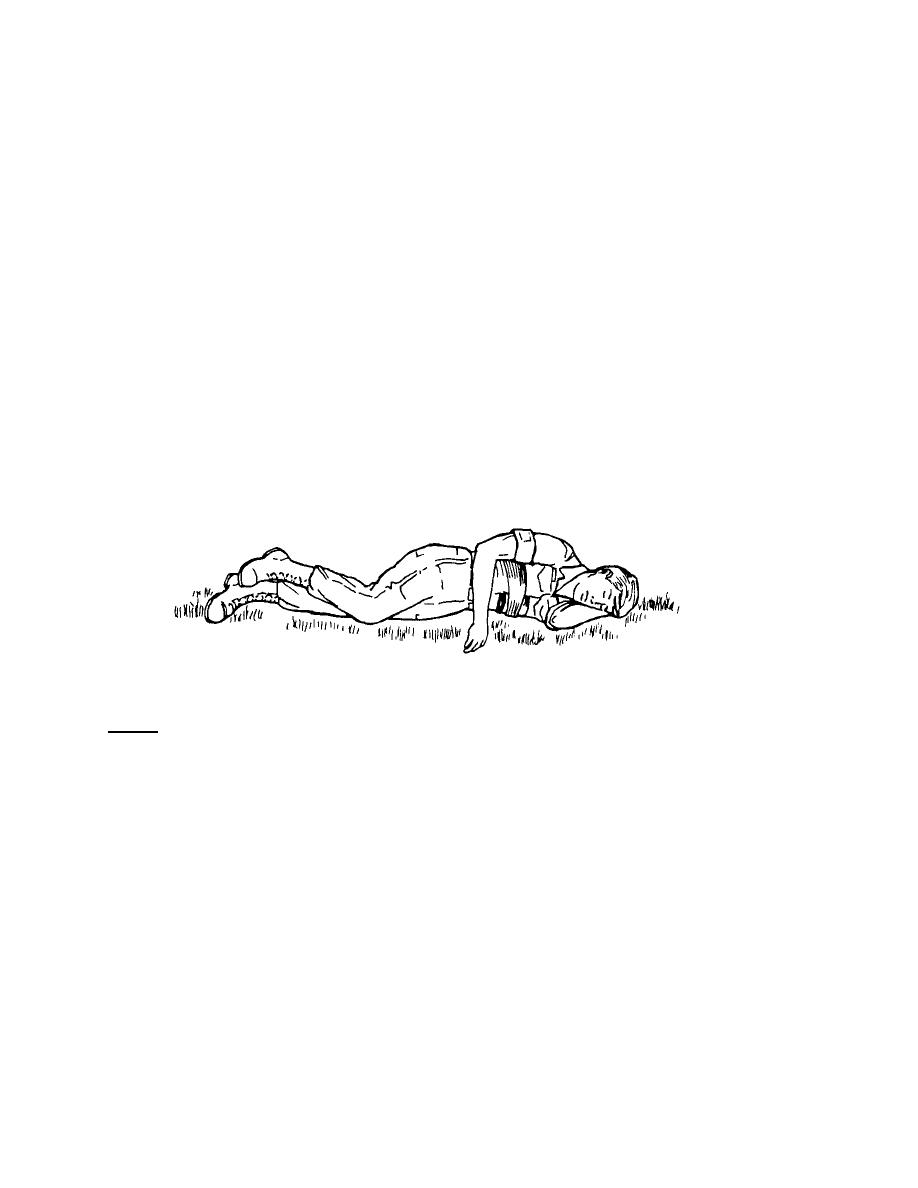
(b) Wrap the other tail around the casualty in the opposite direction and
bring it back over the dressing.
(c) Tighten the tails and tie them with a nonslip knot over the center of
the dressing. The knot will provide additional pressure over the wound and will help to
keep the seal airtight. The bandages should not be tight enough to interfere with
breathing.
CAUTION:
If an object is protruding from the wound, tie the knot beside the object,
not on it.
4-6.
POSITIONING A CASUALTY WITH A DRESSED OPEN CHEST WOUND
Position the casualty on his side (recovery position) with his injured side next to
the ground (figure 4-4). Pressure from contact with the ground acts like a splint to the
injured side and helps to reduce the pain. (Positioning the casualty on his uninjured
side might cause difficulty in breathing.)
Figure 4-4. Casualty with a dressed open chest wound.
NOTE:
The casualty may wish to sit up. If he can breathe easier when sitting up than
lying on his side, allow him to sit up with his back leaning against a tree, wall,
or other support. If he becomes tired, have him lie on his injured side again.
Section II. TREATING TENSION PNEUMOTHORAX
4-7.
TENSION PNEUMOTHORAX
Tension pneumothorax occurs when there is a buildup of air in the plural space
and the air cannot escape. As the air outside the lung continues to increase, the
affected lung continues to collapse. In addition to causing further collapse of affected
lung, the increasing pressure of the trapped air pushes on the mediastinum (the mass of
material separating the two plural sacs). This movement of the mediastinum may
compress the uninjured lung, major blood vessels, and the heart. You will need to
perform a needle chest decompression to relieve the pressure of the tension
pneumothorax.
IS0871
4-6



 Previous Page
Previous Page
